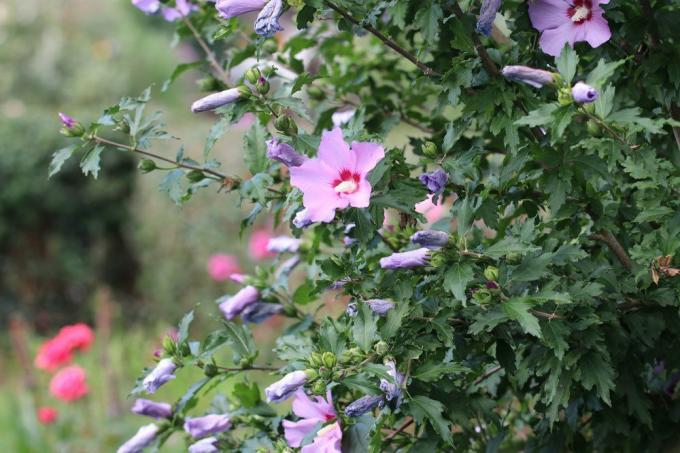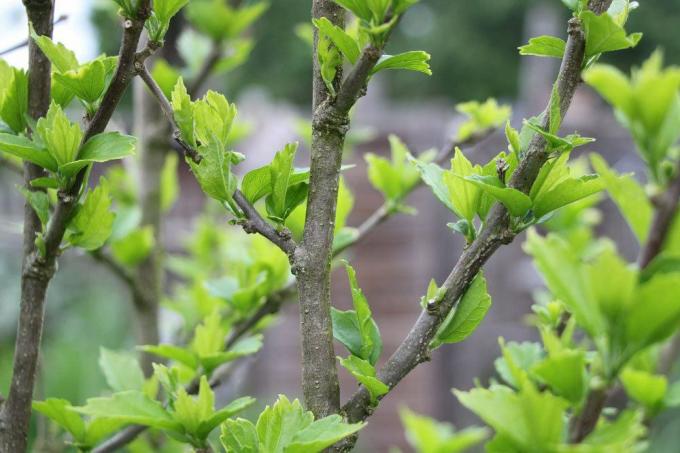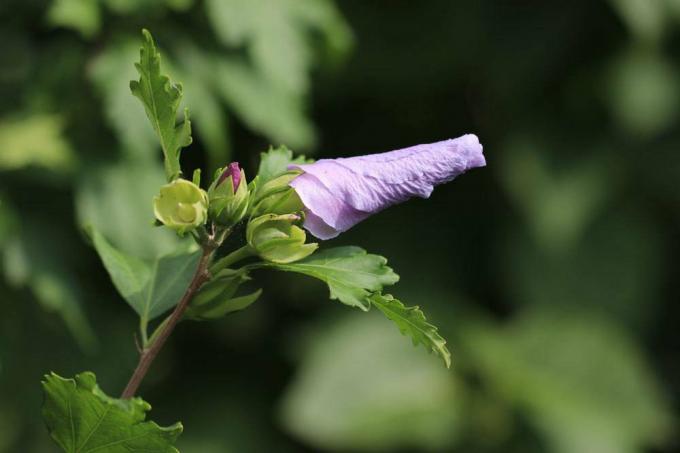
table of contents
- causes
- Location
- Substrate
- Lack of light
- to water
- Increase humidity
- Fertilize
- Cut
- Avoid frost
- Avoid collisions
Hibiscus is popular in the home and garden and presents itself with lush, magnificent flowers that provide a uniquely aesthetic aspect. Some species, such as the giant hibiscus, have flowers with a diameter of up to 30 centimeters, which may only bloom for a short time, but attract everyone's attention. If the flower buds suddenly do not want to open or disappear, care errors and temperature conditions are often responsible.
causes
The most common causes
Hibiscus is offered in Germany in several types, of which the garden, rose and giant marshmallow are most common in gardens and living spaces. The flowers are the most characteristic points of all hibiscus species and therefore it is important to give the plant the necessary care so that the flowers can shine in all their glory. But especially newcomers to the field of hibiscus care often have problems with the flowers, which do not like to show themselves with insufficient or incorrect care.

This can have many reasons:
- wrong location
- Substrate
- Lack of light Defect when pouring
- humidity
- Fertilization error
- inadequate cut care
- Frost damage
- Collisions with living beings or objects
Location
Choosing the right location
All hibiscus species, whether as a houseplant or in a single position in the garden, need a location that exactly meets the requirements of the plant. This should have the following properties.
- sunny to partially shaded
- airy
- no drafts
- little temperature fluctuations
- sheltered from the wind
Marshmallow likes constant amounts of sun and should be left in the dark as little as possible. The partial shade should be chosen carefully, as the plant originally from the dry Tropical areas of the earth and with too much darkness it is difficult to provide the flower buds with nutrients can supply. The room hibiscus should either be positioned on a window sill in full sun or close to the wall on a balcony. Especially in winter, it must not be too close to doors, windows and heaters, or air conditioning systems in summer, as the buds wither due to the air circulation and therefore there is no flowering. Specimens in the garden should have a windbreak.
Tip: Refrain from moving the marshmallow frequently. He is true to location and will not forgive if the new location is very different from the previous one or if you turn it around in the pot.

Substrate
The right substrate is important
Hibiscus is in itself a plant that is often forgiving of small mistakes, but in addition to the location, the substrate is an essential factor for the mallow family. Often rose marshmallow is delivered in the wrong substrates that are too dense and impermeable to air. This creates a problem with the roots, resulting in weak buds that have too little energy to bloom. Prepare the substrate or site in the garden as follows.
- Choose good quality, nutritious potting soil
- preferably neutral or slightly acidic
- relaxed
- humus
- should not contain any clay or loam
- for older hibiscus specimens: mix in compost and sand
The sand loosens the earth a little and the compost provides the necessary nutrients that the hibiscus needs so badly when it is not blooming. So you can fill a fresh pot with potting soil, mix in some ripe compost and a handful of sand. This provides the necessary energy boost without depriving the roots of oxygen.
Lack of light
Prevent a lack of light
As mentioned above for the location, sun is extremely important for all hibiscus species and therefore a location that is too dark can weaken the buds. It helps here to move the plant to a lighter location, but make sure that the substrate in a hardy species corresponds to the substrate of the previous location.
to water
Failure to pour
Since all hibiscus species are extremely thirsty plants that cannot tolerate any form of waterlogging, watering must be optimized. If the flowers are drooping and the soil is damp, the roots may rot. The root rot puts a lot of strain on the plants and should be remedied with the following instructions.
- Carefully remove the plant and its roots from the pot
- Remove wet substrate, taking care not to tear off the roots
- Cut off dark, putrid smelling roots, leave white and green roots on them
- prepare fresh substrate
- then plant
- Do not pour again until the top layer of the substrate has dried
- spray the leaves to moisturize the hibiscus

Root rot is serious business and should be stopped as soon as possible. In addition to the root rot, the marshmallow must of course not dry up. If more than the top layer has dried and the earth appears lighter than usual, it must be poured again. Only use stale water that is not cooler than the outside or room temperature. The flowers and leaves of the hibiscus in particular suffer from cold water and for this reason you should definitely avoid it. Therefore, in rainy areas, a hibiscus should either be kept in a greenhouse or have a rain cover that protects the sensitive flowers.
Increase humidity
The humidity must be adapted to the needs of the marshmallow. The tropical plant needs a constant humidity of over 60 percent, better still towards 70 percent. Air that is too dry is usually a problem for the rose hawk, which is why the flowers fail. Spray the marshmallow daily with stale water or get a humidifier that will automatically increase the humidity.
Fertilize
Avoid mistakes when fertilizing
One of the most important elements for the blooming of the hibiscus flowers is the fertilization before and during the flowering period. The first signs of nutritional deficiency are as follows.
- withered leaves
- discolored leaves
- weak growth
If either of these occurs, you can be sure that the hibiscus needs fertilization. Use either nutrient-rich flower fertilizer, water from the pond or plant manure every two weeks during the growth and flowering phase. You can also sprinkle some compost on the substrate every four weeks and carefully work it into the soil. The liquid preparations can easily be added to the watering water when the hibiscus is starving.
Note: Hibiscus species can do without fertilizer for a long time, but then in any case no flower will appear. If you spot a nutritional deficiency, act immediately using the tips above.

Cut
Don't forget to cut
Hibiscus loves when it's cut. If you want to see a lot of flowers on the shoots every year, you should carry out a maintenance cut in January.
- use disinfected, sharp secateurs to make the cut
- remove any dried, dead, or weak shoots near the larger branches or trunk - this will prevent the hibiscus from incorrectly distributing nutrients
- It's best to remove 25 percent of the total length - this should be done evenly as you cut
Avoid frost
Frost damage can occur to young plants between November and March. They are not necessarily harmful to the young hibiscus, but there may be a loss of flowering power in the following season. Protect potted plants in winter with quarters that are at least over 10 ° C warm. You should protect young garden specimens from the cold with mulch and garden fleece from the wind.
Avoid collisions
The buds and flowers of the hibiscus are extremely sensitive to bumps. Regardless of whether you accidentally hit the buds with your pant leg or your pet runs against the plant, many flowers suffer from this and then no longer show up in summer. So place your hibiscus in such a way that neither you nor your family or pets can cause any major damage. In the garden, it can be worth fencing in the hibiscus, which also provides a decorative aspect.
